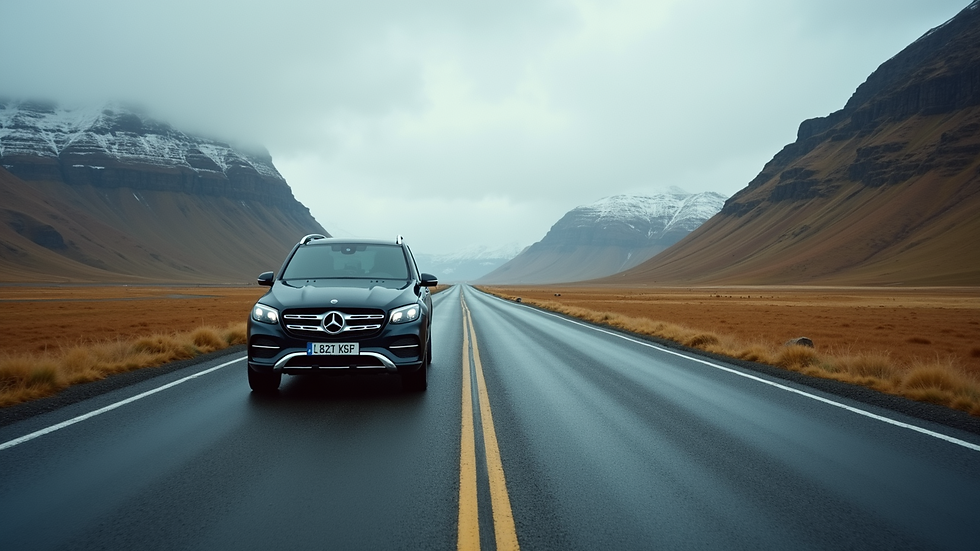What You Need to Know Before Traveling to Iceland
- Michael Funk

- Sep 15
- 3 min read
Iceland is a land of stunning natural beauty, from its dramatic volcanoes and glaciers to its geysers and waterfalls. Before you pack your bags and set off on your adventure, there are some important things to know to make your trip smooth and enjoyable. This guide will help you prepare for your journey with practical tips and useful information.
Planning Your Trip - Iceland Guide
When planning your trip to Iceland, timing and itinerary are key. The best time to visit depends on what you want to experience. Summer (June to August) offers long daylight hours and milder weather, perfect for hiking and exploring. Winter (November to March) is ideal for seeing the Northern Lights and enjoying winter sports.
Travel Tips:
Book flights and accommodations well in advance, especially if traveling in peak season.
Consider renting a car to explore the countryside at your own pace.
Pack layers of clothing to adapt to changing weather conditions.
Check the weather forecast regularly, as Icelandic weather can be unpredictable.
Iceland’s Ring Road is a popular route that circles the island, allowing you to see many of the country’s highlights. Plan your stops to include places like the Golden Circle, Vatnajökull National Park, and the Westfjords.

The breathtaking waterfalls are a must-see on any Iceland itinerary.
Essential Travel Information
Before you travel, it’s important to understand some practical details about Iceland.
Currency and Payments:
The Icelandic Krona (ISK) is the official currency. Credit and debit cards are widely accepted, even for small purchases. It’s a good idea to carry some cash for remote areas.
Language:
Icelandic is the official language, but English is widely spoken, especially in tourist areas.
Transportation:
Public transport outside Reykjavik is limited. Renting a car is the most convenient way to explore. Be aware of road conditions, especially in winter, and always check for road closures.
Health and Safety:
Iceland is very safe for travelers. Tap water is clean and drinkable. Travel insurance is recommended, especially if you plan outdoor activities.
Electricity:
Iceland uses 230V and the European plug type (two round pins). Bring an adapter if needed.

Renting a car gives you freedom to explore Iceland’s remote landscapes.
What to Pack for Iceland
Packing for Iceland requires preparation for a variety of weather conditions. The weather can change quickly, so layering is essential.
Clothing Essentials:
Waterproof and windproof jacket and pants
Thermal base layers
Warm sweaters or fleeces
Sturdy hiking boots
Hat, gloves, and scarf
Swimwear for hot springs
Other Useful Items:
Sunglasses and sunscreen (the sun can be strong even in cold weather)
Reusable water bottle
Camera with extra batteries or power bank
Daypack for hikes and excursions
If you plan to visit during winter, bring crampons or ice cleats for walking on icy surfaces. Also, consider packing a headlamp for the darker months.

Good hiking boots are essential for exploring Iceland’s rugged outdoors.
Exploring Iceland’s Natural Wonders
Iceland is famous for its unique landscapes and natural phenomena. Here are some must-see attractions:
The Golden Circle: Includes Þingvellir National Park, Geysir geothermal area, and Gullfoss waterfall.
Jökulsárlón Glacier Lagoon: See floating icebergs and possibly seals.
Blue Lagoon: A geothermal spa with warm, mineral-rich waters.
Vatnajökull National Park: Home to Europe’s largest glacier.
Northern Lights: Best viewed in winter away from city lights.
When visiting natural sites, respect the environment by staying on marked paths and following local guidelines. Many areas are fragile and protected.
Tips for a Smooth Trip
To make the most of your Iceland trip, keep these tips in mind:
Book tours and activities early: Popular tours like glacier hikes and Northern Lights excursions fill up quickly.
Stay connected: Consider buying a local SIM card or portable Wi-Fi device.
Be flexible: Weather can affect travel plans, so have backup options.
Try local cuisine: Don’t miss Icelandic specialties like lamb, seafood, and skyr.
Respect local customs: Icelanders are friendly and appreciate polite behavior.
For more detailed planning, check out this iceland travel guide which offers comprehensive information on destinations and activities.
Preparing for Your Iceland Adventure
Traveling to Iceland is an unforgettable experience, but preparation is key. By understanding the climate, transportation options, and cultural norms, you can enjoy your trip without surprises. Pack smart, plan your itinerary carefully, and embrace the incredible natural beauty that Iceland has to offer.
Whether you’re chasing the Northern Lights or hiking volcanic landscapes, Iceland promises adventure at every turn. Take your time to explore and savor the unique charm of this island nation. Safe travels!





Comments